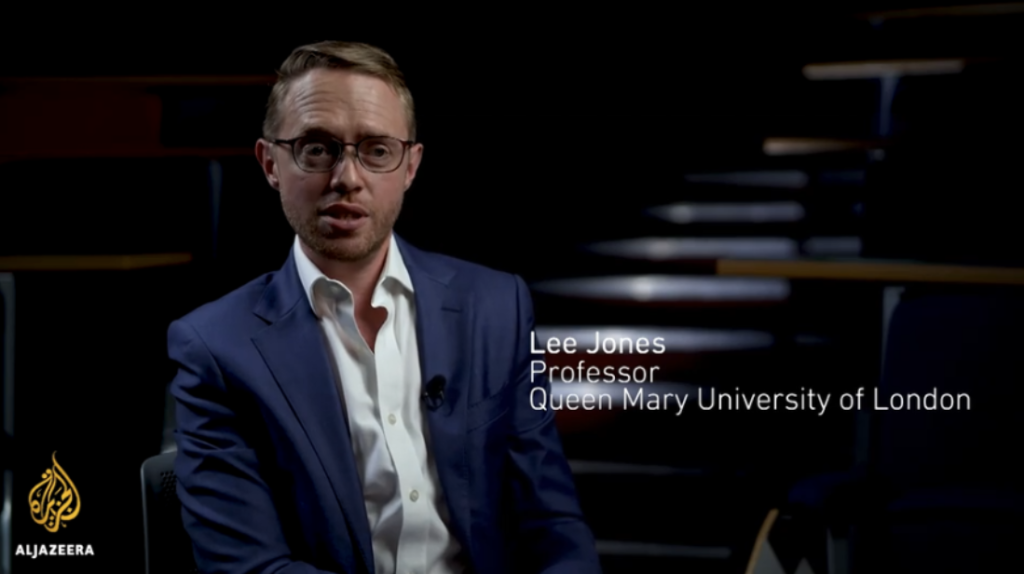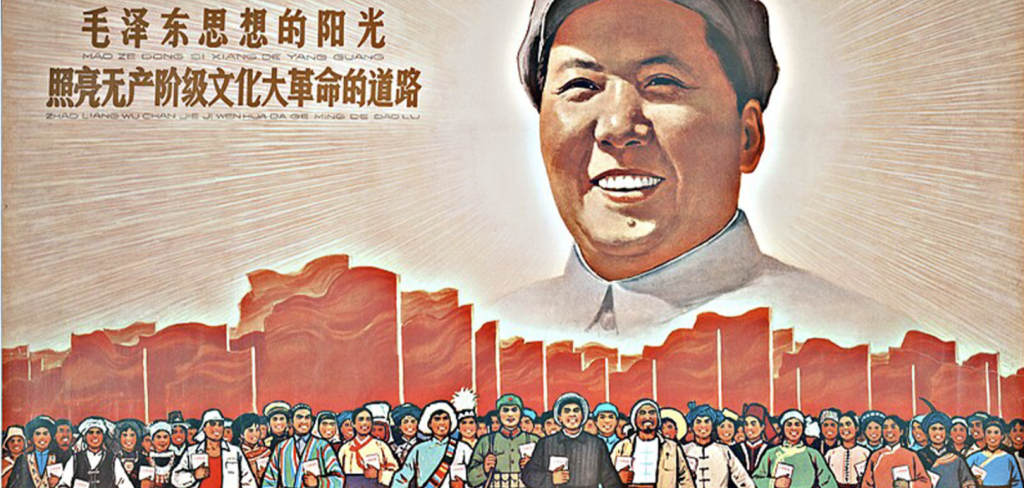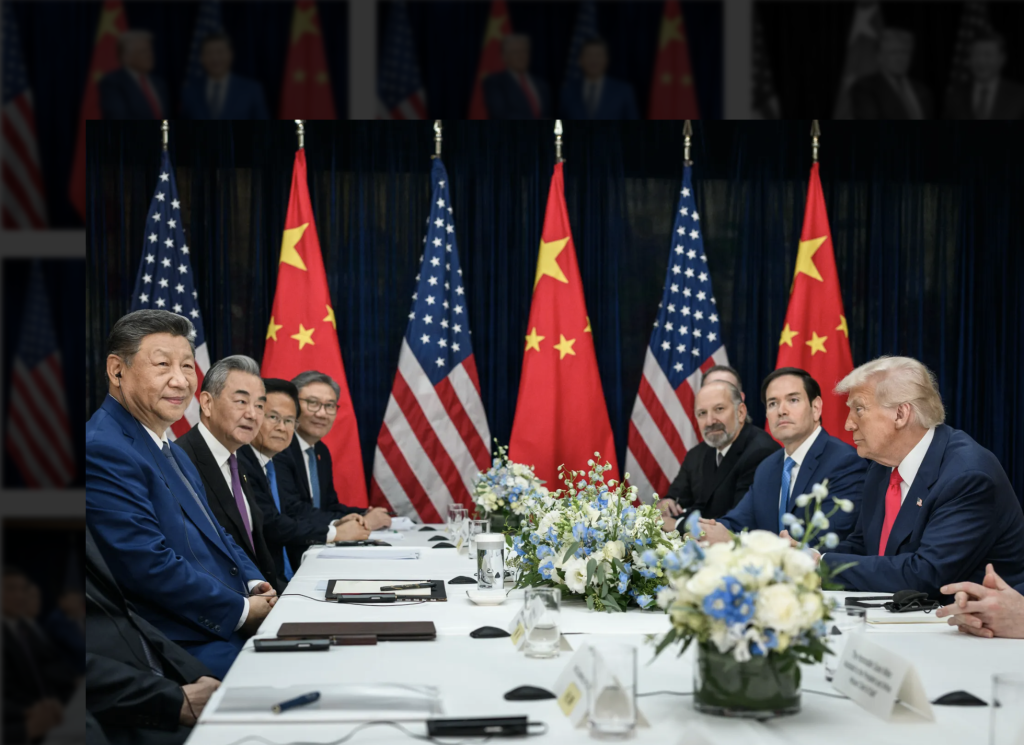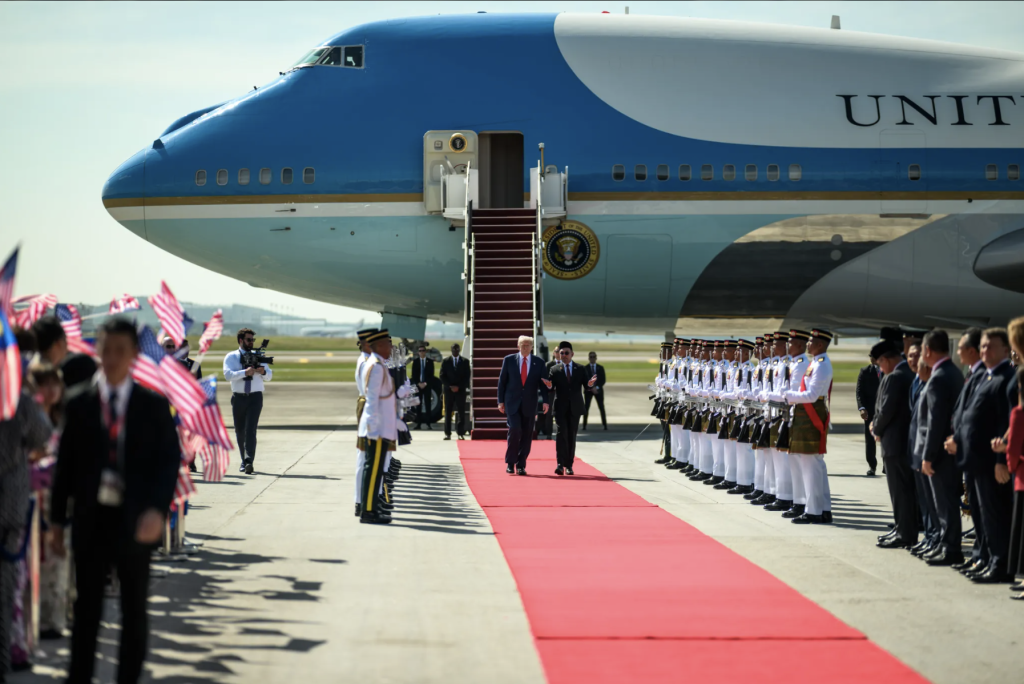Remembering Joseph Fewsmith: The Passing of a Generation of China Hands
The Future of People-to-People w/ David Moser
- Interviews
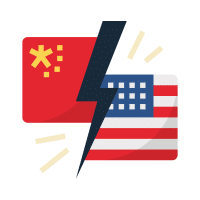 存档帖子
存档帖子- 05/27/2025
- 0
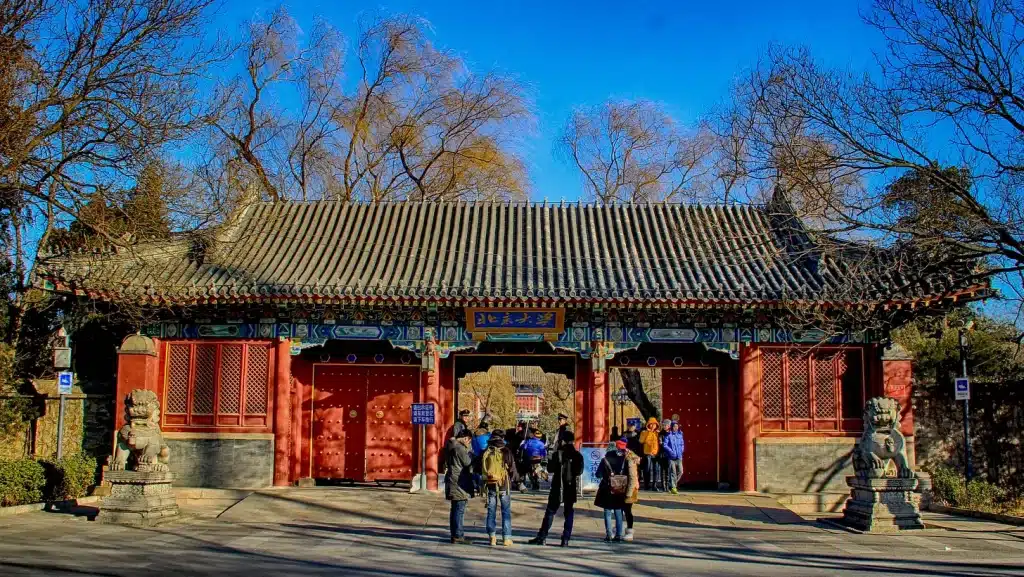
At a time of shifting geopolitics, educational exchange and people-to-people connections remain vital to fostering mutual understanding between the U.S. and China. In this interview, we dive into the current and future state of these exchanges.
David Moser is an Associate Professor in the Foreign Languages Department at Beijing Capital Normal University. Previously, he served as the Associate Dean of the Yenching Academy at Peking University. Moser holds a Master’s and a Ph.D. in Chinese Studies from the University of Michigan, with a major in Chinese Linguistics and Philosophy. He has been based in Beijing for 35 years, and has been active in both academic and media circles.
Moser often appears as a commentator on State media news programs such as Dialogue and World Insight. He also appears on China-related programming on Al Jazeera TV and BBC radio. Moser is the author of the book A Billion Voices: China’s Search for a Common Language, published by Penguin. He currently co-hosts Barbarians at the Gate, a biweekly podcast covering aspects of Chinese history and modern culture.
Wei Wei Chen: Please tell us a bit about yourself and how you became involved in international education exchange in China.
David Moser: Yes, thank you for doing this. I think it’s very meaningful, and I’m happy to share all the information I have. I came to China in 1986 and was first a visiting scholar at Peking University, which is where I decided to stay in China and continue to carry out my academic work as much as possible. I began teaching at the Foreign Studies University in Beijing, teaching translation theory and cross-cultural grammar, and other language-related curricula. Then I took a couple of years off and worked for China Central Television, CCTV, the Educational Channel. So I was technically still in education back then, but I was educating millions of Chinese students in English. Then I went to Beijing Capital Normal University; at first, not teaching for the university, but for the CET Study Abroad program, which is probably one of the best, if not the best, study abroad programs, especially in terms of language. I worked with them for a decade or so, collaborating with universities like the University of Michigan, Brandeis, Cornell, Middlebury, and at that time, CET had programs in Beijing, Shanghai, Hong Kong, and Harbin. More on that later. But I was teaching Chinese history and politics, and I’m arranging internships for these American study abroad students, and it was a wonderful golden age for me. I mean, the students were extremely optimistic and very future-focused.
Then, after the study abroad program, the study abroad numbers began to go down. I went to Peking University for a few years as the associate Dean of the Yenching Academy. These were very different students, very elite master’s students. There were many Americans in the program, but also students from all over the world. Anyway, I’m very happy to have done all that. I look back on it with pride, and I’ve taught many students who caught the “China bug,” as we say, and have come back to China on their own to do amazing things. They have Substacks, they’re very active, and some are journalists. So it has been an amazing era, and now here we are in this new age.
Current Exchange Landscape
WWC: What is the current state of U.S.-China international educational exchange?
DM: If you had asked me this question during COVID-19 or just after COVID-19, it would’ve been a very, very pessimistic answer. The shockingly low number of 800 sticks in my mind, it was very discouraging. But right now I’m much more optimistic. I would describe the current state of U.S.-China international exchange as still struggling, but reviving slowly, gradually. We’ve seen a slow uptick in student numbers and a great many of the Chinese programs are coming back, but with some difficulty, and coming back cautiously. There are so many programs that vary in length, format, and curricula, both for college and high school students. I’m surprised that there are so many, given the fact that the barriers are so much higher now, but this means it’s very hard for us to estimate the actual number. I mean, there’s no way we can actually put a number on it, but assuming a continued rate of recovery based upon the data we have, there are likely to be between 6,000 and 9,000 American students in China. You may have a different set of numbers. I’m not sure. That’s not a number I would stick with, but it’s a big improvement. That means that there is still a lot of interest in China. You have the CET program, which has come back, although not with as many cities or as many programs to work with: Princeton in Beijing, and other sorts of direct enrollment programs, and lots of shorter-term high school involvement. CET has also revived its language program at the Capital Normal University and its Shanghai Internship Program with some fairly healthy numbers, which is good. So the numbers are rising, but I think it will be many more years before we reach that previous high of about 15,000 or so students. That’s not likely for the near future. But the good news for all of this–the state of the relationship–is that Chinese universities are welcoming American students with open arms, including foreign students from around the world.
The Chinese government is really trying to make enrollment visas and travel as easy and convenient as possible as well. The Chinese academia is very aware of the importance of having foreign scholar involvement in the university’s exchange programs. So it’s an open door now, and the application shouldn’t be a big barrier. My advice to interested students is to just find a way to get to China. For me right now, the specific program is less important. What’s important is getting here because just being in China is a very valuable educational experience in itself.
WWC: As a long-time academic insider directly engaging with students in such programs, can you take us beyond the statistics to share what the challenges facing these programs and their resulting day-to-day impacts have been like in and out of the classroom?
DM: Inside and outside. That’s good to make that distinction. Well, first of all, the main challenge, which is not new, is funding. Funding, scholarships, and logistics – it’s very difficult to revive a previous program, and it’s even more difficult now to start up a completely new program. So the big hurdle is: where’s the funding going to come from? And with low student numbers, it’s probably not going to be just from the students. This is a problem currently facing all academic study abroad programs, but it’s also not really as simple as that. The numbers are smaller, and that’s a challenge, but the motivation and curiosity of these students is, in my experience, as strong as it ever was. And again, from my experience, once the students are here, the study abroad experience has not changed very much. They have the same kind of amazing experience that students pre-COVID had. China is always an eye-opener, a mind expander, an amazing experience, and that hasn’t really changed, even with the new digital technology; it’s still the same reaction from these American students. They have a kind of affinity for China, I think, and for this kind of new experience.
I just gave a talk yesterday to students in a very ambitious and innovative program, a gap year program for students who go to different parts of the world. A hundred or so students get to explore Beijing, and they absolutely love it. I could tell it’s been life-changing for them, but the program is struggling for funds despite great interest, and it’s hard to get corporate funding, which is their main source. You don’t want to charge exorbitant rates for the tuition either. So it’s a big challenge, but that’s just the money side of it.
I think the other challenge of these programs is that they have to adjust the traditional academic structures and curricula that we’ve used for so many decades for this new batch of students. I have a strong impression that these new students are much more academically inclined than the earlier ones. They’re much more serious about really learning Chinese, making deep inroads into the country and into the culture. They’re focused. They enjoy the outings, sports, recreation, parties, and all that, but I do hear some complaints from some students that the program they were in was too easy and not rigorous enough, especially the extracurricular language activities, which they felt were not worthwhile because they weren’t challenging enough.
That’s pretty encouraging, though. This new generation of students is more serious and focused, and most likely because the students looking for a party program with lots of fun are not going to choose China. So I think the programs face the challenge of learning how to adapt to these new, more serious students and to give them something that they want out of study abroad. So all of these aspects are challenges, but I think a lot of people are realizing this and they’re meeting those challenges, so far, pretty well.
WWC: What factors beyond COVID-19 and the rise in geopolitical tensions have contributed to the reduction in exchange students from both sides?
DM: That’s a big topic. I think it’s important that people realize that – and I’m speaking for the United States here – I think for the United States, the economy was having a downturn even before COVID-19, and the cost of college education was already going up through the roof, and these definitely were some of the factors that caused this dip in foreign exchange numbers, just after the 2008 Olympics and then even up to COVID-19. We Study Abroad workers held many, many meetings during those years, and I don’t think we were able to pinpoint one specific single cause for this drop. There were many factors, but of course, one factor is that American students now don’t have the same impression of China. They have the impression that China is no longer a ticket to a high-paying job. And this has to do with the U.S.-China tensions that you mentioned. And I think that impression is probably accurate, though the importance of having Chinese-savvy young people in the workforce is still a very serious issue. In fact, with the U.S.-China tensions, I think it’s actually more important than it was even pre-COVID. To have students who have lived in China speak Chinese and understand the culture, such students are going to be increasingly more important as time goes by.
Going back to the topic of the higher cost, the cost of studying abroad and short-term programs has increased for many reasons. I have a sense of the desires of the students and parents here, because lately, parents are contacting me, having heard of me by word of mouth. They send me emails asking for advice about the best choice for their son or daughter to study Chinese in Beijing. Sometimes the students are very, very obsessed with this goal, but one sticking point is the cost. Many of the good programs are going to have tuition and boarding costs of at least $15,000, and that’s a pretty big bite into the family funds; and if you add living costs and other things, it’s much higher. So this is definitely a problem. There’s also a feeling that the U.S. is not as safe as it used to be. For the Chinese students applying for colleges in the US, the impression from reading the news is that they are less welcome at American universities now, and, sadly, there is some truth in all of that. But I don’t think the number of Chinese going to the U.S. will change much. It’s down quite a bit, but should stay in the area of 250,000 or so. So this asymmetry that we’ve been talking about is still going to be there, which just means that it’s more important that we try to get more people to come to China.
Policy Environment
WWC: Within China, what do you perceive to be the general sentiment toward how these exchanges can adapt and thrive in the years ahead?
DM: Certainly, now is the time for experimentation, when things are in flux, and you can’t just go back to the old normal. You have to experiment. And we, or certainly I, do tend to romanticize the goal of Chinese studies. I’m nostalgic about the traditional formats, which seem to have worked very, very well in the past. But it’s worthwhile to find new ways of enticing students, of attracting them. And also, we forget that China’s study programs, like anything else, constitute a market. For the most part, these programs are set up as profit-making entities, including the host university or the company that’s providing the service. So we have to work to make these programs a little more attractive, certainly more relevant and more marketable for American students. We have to think about the bottom line, which we don’t like. Academics don’t want to talk about money. We just hope that millionaire philanthropists will give us lots of money and let us do what we need to do. So, I think the new programs and the existing ones have to rethink their formats, for sure, not only the curriculum, but the very approach to the study of China.
We talk a lot about the new digital technology. The new students, I think, are more willing to accept and take part in online interactions and classes. They’re used to digital media. They swim in it, both Chinese and U.S students, and we old-fashioned educators, who value face-to-face, person-to-person interaction over screen-to-screen kind of contact…well, the times have changed. And these younger students are okay with digital interaction. This represents curricular challenges and changes in how we go about teaching. I don’t have the answers. I just think with AI, digital dictionaries, online portals, and so forth – all these things present new kinds of possibilities and challenges. And I see the challenges as an opportunity to rethink and reformat these traditional structures. The new technology should not be seen as a threat.
WWC: Based on your previous experience with the Yenching Scholars program and elsewhere, where do you think effective policy could be made that may not be obvious to those outside of the international education field?
DM: Programs like Yenching and Schwarzman are very important, but they’re outliers because the student bodies are composed of very, very elite students. So if you’re referring to Schwarzman and Yenching types of programs, I think there might be a couple of aspects that could strengthen them. Some people won’t agree with this, but for me, number one is that it is possible to pare down the in-class curriculum format. Not eliminate it, but just pare it down. This means students spend less time in the classroom. I think that for many of these programs, even some of the high school programs, the students can and should be more independent. Of course, you need funding for them to do an independent study. When I was teaching at Yenching, the students had opportunities to conduct independent research, and they would go to different parts of China. And some of the research projects were very innovative, interesting, and creative, but the stipends and funding they received were way too small to conduct a real research project. So you can take some money away from certain aspects of the program and put it into student independent research. Most of the students actually complain about some of the required courses and about the level of the Chinese courses—which, guess what?—they find it too easy, too irrelevant, too simple. They want to challenge themselves. They want to be able to speak Chinese at a relatively high level, to converse about their academic projects and their occupational interests. In summary, I think that we can shift resources from classroom-heavy curricula to allow the students to explore on their own.
The second thing is, I think we need to put more into giving the graduate students a pipeline into possible employment or careers after the program. We had a career counseling option for the Yenching students, but it was very, very minimal. I think it is much more important to give students more direct access to potential employers, to bring in more people from the private sector, or just people who might end up hiring the students, to give them, even as they’re getting an education, a sense of what their futures might look like. But this is only for these elite students who already know a lot about China and have specific career goals. And I think it’s important to get these students on the ground as potential China hands, whether it be in diplomacy, high tech, or whatever…to have them out there and functional, making contributions right out of graduation. We should revise this structure to make a different kind of master’s degree for the 21st century that is a departure from the old paradigm.
As for the other kinds of programs, they are quite diverse. There are many, many different formats, and all different kinds of students, including some very young and some older and very experienced. I think one barrier that could be broken is to combine forces. I mean, I don’t see any reason to be running so many isolated programs that only have 10 students, and try to give them a full China experience. It’s not economically feasible. Programs could be merged. I think that they would gain from having more students like them, a larger cohort, and different kinds of teaching styles. CET actually experimented with that at some points, doing a sort of mutual knowledge sharing where we exchanged resources and opportunities with partner organizations that enriched both programs. In this day and age, I think we have to do that because there’s no one program that’s going to take the lead. Every program has its strengths and weaknesses.
For all programs, I think the younger students, even now in high school, are different. And I think young kids today really respond pretty well to a challenge. Go out and learn this. Do it on your own, and independent study. Some of the students respond much, much better to that because they have a sense of agency: “I created this research topic, I created this method, I went out and I found the answers on my own.” And not only would that give them deeper insights into China, but also give them a better sense of accomplishment and maybe even motivation to go ahead and keep doing this when they graduate.
Future Directions
WWC: In your recent July 2024 interview with the National Committee on U.S.-China Relations, you mentioned that “consensus building, and the peace building, and the mutual understanding come from…talks from people in rooms face to face.” Yet, as we move toward a more digital future, which innovations in virtual or hybrid programming do you believe will have a lasting impact on U.S.-China educational exchanges?
DM: That’s a very good question because, of course, we’re moving in that direction. As I said before, I still believe that the best and perhaps the most lasting experiences are those that are face-to-face, interacting in the same space. We human beings respond to being in the same space, the physicality of it. It’s a very natural way to cooperate and to get to know each other. But as I mentioned, increasingly for this new generation, this face-to-face can also include face-to-face on two computer screens. This doesn’t feel artificial and unnatural to them. It’s their natural way of communicating. Even if they’re in the same city or in two adjacent bedrooms, they’re communicating on screens. So I think for my 25-year-old daughter, this kind of digital interaction format is very natural and comfortable. So we have to face the fact that these new digital tools, virtual reality technology, artificial intelligence, and digital spaces are more and more complex and actually more and more rich and filled with more and more information. I don’t play around with these new technologies very much, but I can see and I’ve been told that they’re more and more able to create very realistic and compelling environments that can be shared with two or more participants. So maybe this is the future, but who’s to say that these new possibilities are worthless or distracting? Much of daily life in China and the U.S. is carried out online. I mean, this is an example. You and I, we’re online, face-to-face talking. Does this feel like this is not accomplishing the goal, or is it deficient in some way? I don’t know. I’d rather be at a coffee shop with you, but this works pretty well, too, right? The face-to-face advantage will never completely go away, but we need to adjust to the new reality for everything.
There are advantages and disadvantages. And for these new digital tools, a friend of mine who is a lecturer at George Washington University and a perfectly bilingual Chinese English speaker has some really interesting ideas for restructuring language curricula. His idea is to just make the curriculum task-based. You give the students a task rather than just passive classroom learning, especially downplaying the memorizing of characters, which in this day and age is less and less important. So the student is given a task and a challenge, a project to carry out using only the target language, Chinese or English, and the task should focus the student on the essential language aspects needed to carry out that task. And it’s an interesting idea, and I think it’s one that’s getting gradual support, but that’s something that only these digital tools can really facilitate.
WWC: Looking ahead, what are the emerging “new normals” and trends we should pay closer attention to within this space to remain informed?
DM: Summing up a lot of what I’ve said, we’ve already mentioned that our very basic ways of teaching and learning will definitely evolve. They’re evolving now and will become very different from what we used to know. We have to just accept that fact. Some people are afraid of this. I admit that I am. I think we will lose some aspects. But thanks to these new digital language tools, students are already creating their own personal study of Chinese or English. Even when I was still at CET, students got the idea that these digital tools allow them to do a lot more and to go further than the classroom on their own, because these tools are so powerful and so handy. So I think the new normal is going to be less and less reliance on textbooks–which go out of date in one year–and more and more on artificial intelligence or digital activities and classroom sessions, combining in a hybrid way to suit the student’s needs or to fulfill the goals of the program. This is something you might call “freestyle immersion” or something like that, a new normal where people are guided by teachers and technology to learn about China in a way that’s appropriate to their goals and in a way that maximizes their future development, whether it be in China or elsewhere. As the Chinese say, you gain something, you lose something, you lose something, you gain something. And I think that’s kind of the way to look at it right now. Whatever the new normal is, as long as we focus on what the goal is, then we can always figure out how to use the new kinds of tools and techniques to get to that goal.
The problem right now is that in order to reach a goal, you need to have the people there striving for that goal, right? And that’s the problem right now. I’ve always believed there’s a natural affinity between Chinese and American students.. And as long as we’re able to get those students together either digitally or in person, then I think we can be optimistic. There’s going to be a brighter future for all those kids. So I think the sky’s the limit.
Wei Wei Chen is a 2023 Schwarzman Scholar and volunteer for China Focus at The Carter Center.
The views expressed in this article represent those of the author(s) and not those of The Carter Center.


